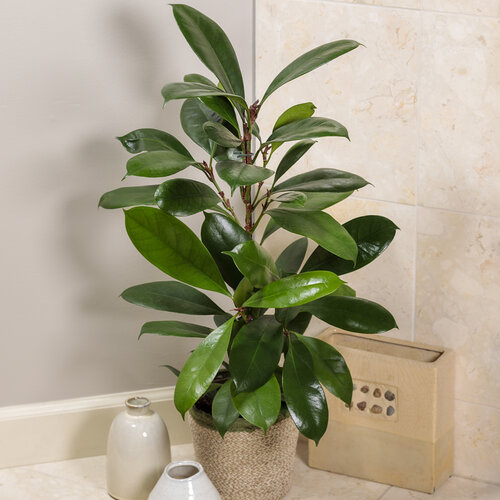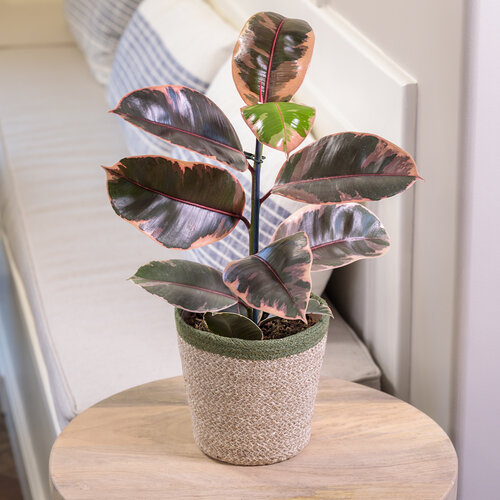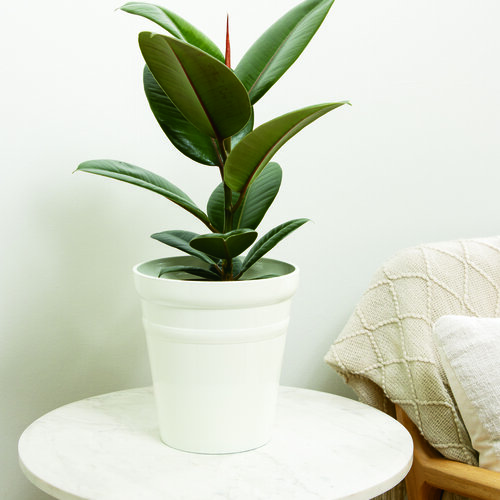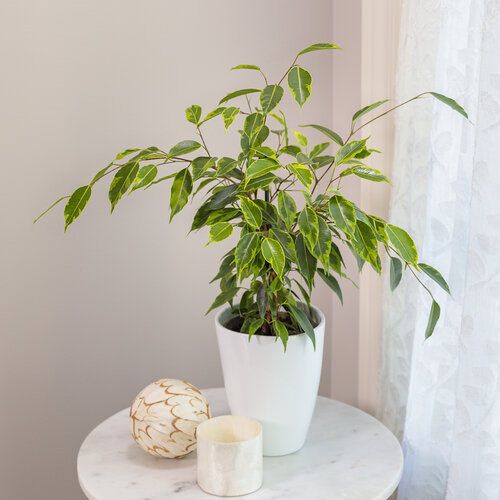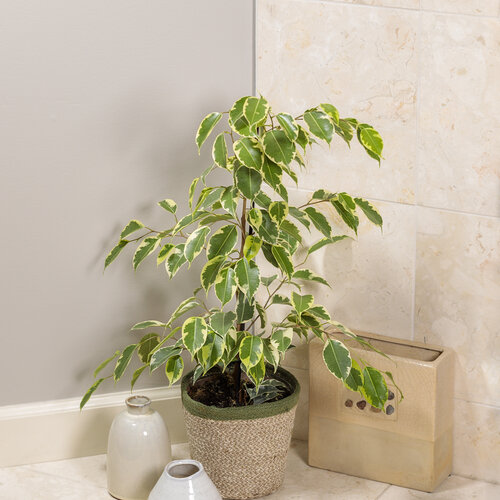Ficus - The Ultimate Growing Guide from Proven Winners®
This widely grown fruit tree is also a popular ornamental houseplant, occurring in a range of colors, shapes and sizes.
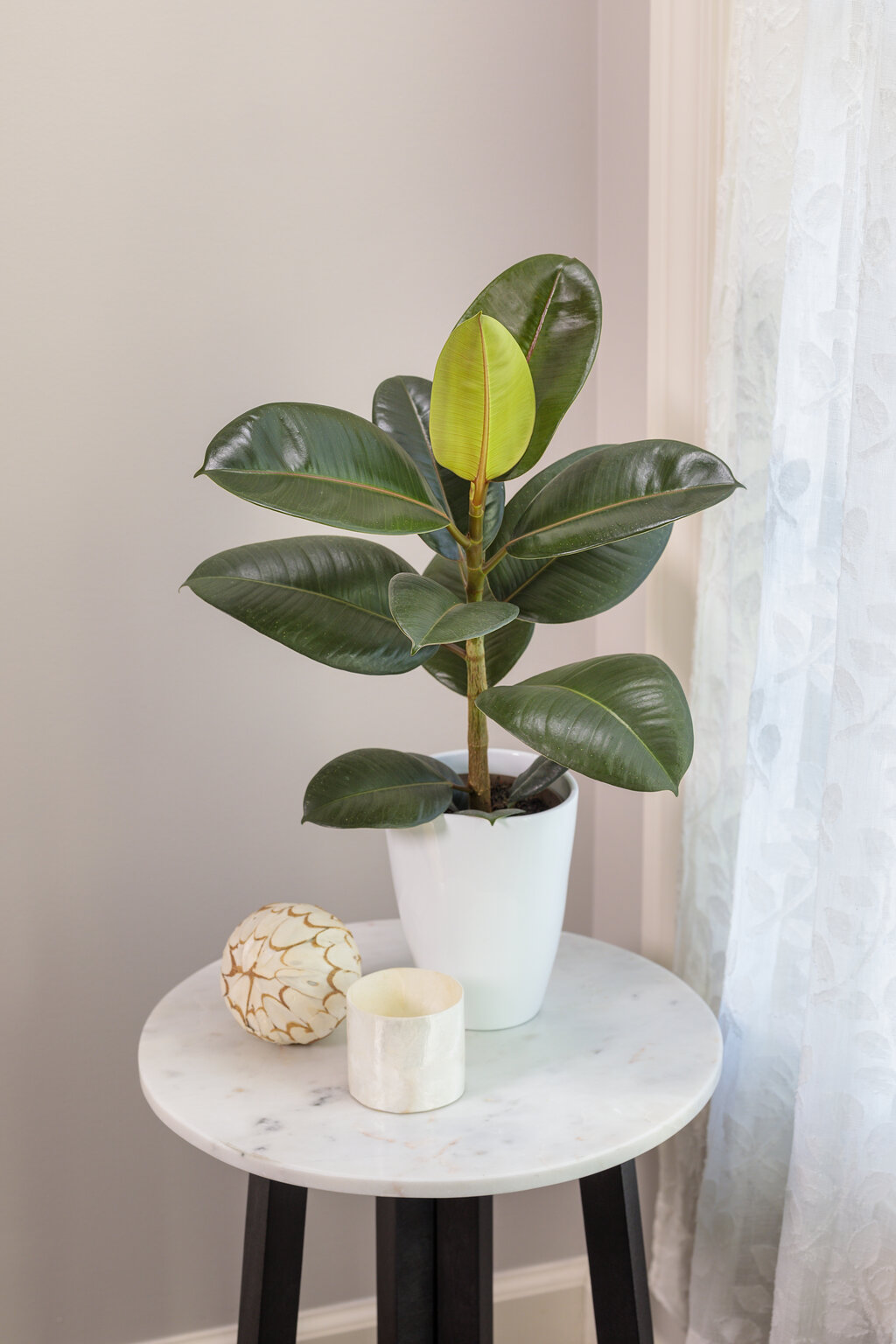
Check here to see if your Local Garden Center or The Home Depot® is carrying leafjoy®.
Ficus (Ficus spp.), also known as fig, is a tropical or semi-tropical plant with sweet edible fruits. There are also many ornamental varieties that can be grown as houseplants and seldom, if ever, bloom or produce fruit. Though most are upright trees, ficus types also include those with a shrubby, weeping, climbing or creeping habit. The attractive foliage can be green, burgundy or variegated, ranging from papery thin to thick and leathery.
Though ficus can be a challenge to grow as an indoor plant, the rewards outweigh the drawbacks. By following some basic tips, these plants can thrive in your indoor home environment. Here’s how to grow and care for ficus houseplants.
FICUS CARE & PLANTING
How to plant: Indoor ficus plants are grown in pots. This fast grower can be kept to a manageable size by repotting no more than every other year. If the roots are visible in the drainage holes at the bottom of the pot, then it’s time to transplant. Repot in spring when plants are increasing their growth rate.
- Choose a pot that is 2-3 inches larger in diameter and slightly deeper than the previous pot.
- Remove the plant from its current pot and gently tease out the roots if they are tightly wound around the root ball.
- Place a small amount of fresh potting soil in the bottom of the new pot.
- Set the plant in the pot at the same level it was in the previous container.
- Add fresh potting soil around the sides of the root ball up to the base of the stem.
- Press down soil gently to remove air pockets and water well.
Light: Place your ficus houseplant in a window that receives indirect bright light. Plants can be placed outdoors in summer, but avoid placing in direct sunlight to prevent leaf drop or scalding.
Temperature: Optimal indoor temperature range for ficus plants is between 70-85 degrees F. Don’t allow temperatures to drop below 60 degrees F to prevent cold stress or damage. Avoid drafts from heating and cooling vents, which can cause leaf drop.
Humidity: Ficus in general are quite tolerant of a broad range of humidity. However, if you need to increase humidity, provide a room humidifier, mist leaves regularly, or place plants on a tray filled with pebbles and water. Don’t allow the bottom of the pot to sit in water to prevent root rot.
Soil: Ficus prefers rich, well-draining soil. Use a high quality all-purpose potting mix and add perlite or orchid bark to improve drainage if needed.
Watering: Overwatering is a common problem with ficus. Water plants when the top 2 inches of soil is dry. Water until moisture comes out of the drainage holes at the bottom. Reduce watering in winter when plant growth slows. Spray or wipe down leaves occasionally to remove dust.
Fertilizing: During the active growing season between spring and early fall, apply a balanced liquid fertilizer once a month at half strength. Cease fertilizing during fall and winter when plant growth slows.
Pruning: To promote a bushier habit, or if plants become too tall and leggy, prune back stem tips. Trim to just above a growth node. Plants will quickly sprout new leaves. Winter is the best time to prune when growth is slowest. Trim off dead or damaged leaves as they occur. Wear gloves when pruning ficus plants to avoid skin irritation from the sap.
TRY THESE PROVEN WINNERS® VARIETIES
There are many different varieties of houseplant ficus to try. Here are some to add to your indoor environment:
|
|
|
|
|
|
FICUS FAQ’s
Are ficus good indoor plants?
Many varieties of ficus are suitable as indoor houseplants, occurring in a wide array of sizes, colors and growing habits to suit any personal taste or indoor decor. These decorative plants also help to purify indoor air by absorbing carbon dioxide and releasing oxygen.
Do ficus plants need sunlight?
Ficus houseplants perform best in bright indirect window light. Direct sunlight may cause leaf drop or scalding.
How do you care for a ficus plant?
When given the right growing conditions of bright indirect light, warm temperatures, protection from drafts, moderate water, good drainage, rich potting soil and regular fertilizing, ficus will thrive indoors.
Are ficus plants easy to care for?
Though ficus can be somewhat finicky, they will thrive indoors when given a stable environment and the right growing conditions.
How often should you water a ficus tree?
Allow the soil to dry out in between waterings. When the soil feels dry to the touch 2 inches down, it’s time to water. Plants will need more frequent waterings during warmer months, with less water in winter when plant growth slows.
Why are my ficus leaves falling off?
Leaf drop is one of the most common problems affecting ficus. They are sensitive to sudden changes in light or temperature, or when moved from one spot to another. Keep plants out of direct sunlight, avoid hot or cold drafts, and provide optimal growing conditions to avoid stressing plants.
How do I know if my ficus needs water?
To determine whether your plant needs to be watered, stick your finger into the soil 2 inches deep. If the soil is dry, it’s time to water.
Should I repot my ficus?
To keep ficus at a manageable size, repot no more than every other year. When roots are visible in the drainage holes at the bottom of the pot, it’s time to transplant to a larger size container.
Are ficus poisonous or not?
Ficus is mildly toxic. The milky sap may cause skin irritation for pets and humans. Ingestion of any part of the plant may result in stomach upset.
HOW TO USE FICUS IN YOUR HOME OR OFFICE
There are many ways to display ficus plant in your home. Here are some ideas:
- Place a ficus plant in a decorative pot and display on a living room shelf or table in combination with decorative accessories such as candles and statuary.
- Use a larger specimen as a focal point in a brightly lit corner of a living or dining room, near a sliding glass door or window that receives bright indirect light.
- Group different ficus together or with other plants with similar growing needs for an attractive year-round display.
- Try pots made from different materials such as ceramics, clay, stone or resin. Choose a color that complements or contrasts with a room’s color scheme.
- Choose pots that go with the style of your home. Use a sleek modern pot for a contemporary room, a clay or ceramic pot for Colonial or ranch interiors, or a stone container with subdued coloring for Asian style decor.
- Adorn a bright office lobby or living room using a larger specimen as a floor accent.
- Dress up a desktop, end table or dining table with a smaller ficus planted in a colorful pot.
Learn more about decorating with plants.
FICUS COMPANIONS
For a more colorful indoor display, include these other houseplants that thrive in similar light conditions:
- Mythic™ Jewel Alocasia
- New Vogue™ Feeling Flirty™ Purple Tradescantia
- Prismacolor™ Green Princess Philodendron
- Beautifall™ Jade Pothos
- Prismacolor™ Lemon Lime Philodendron



